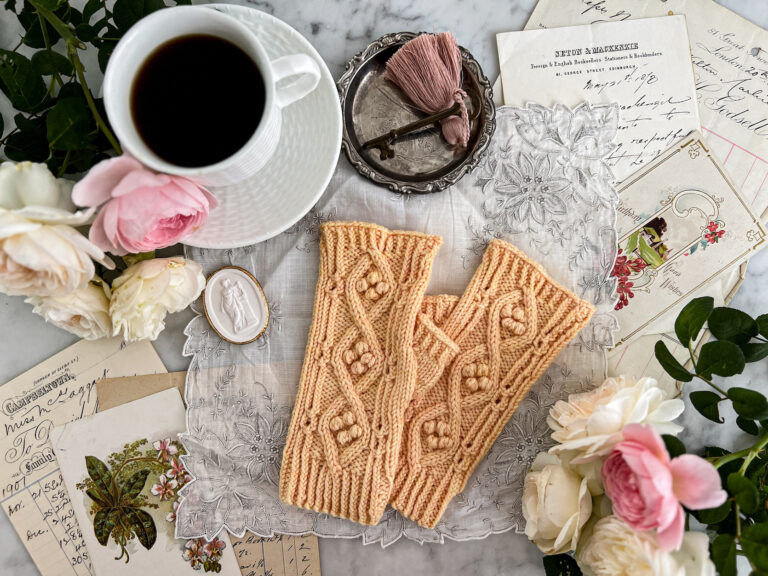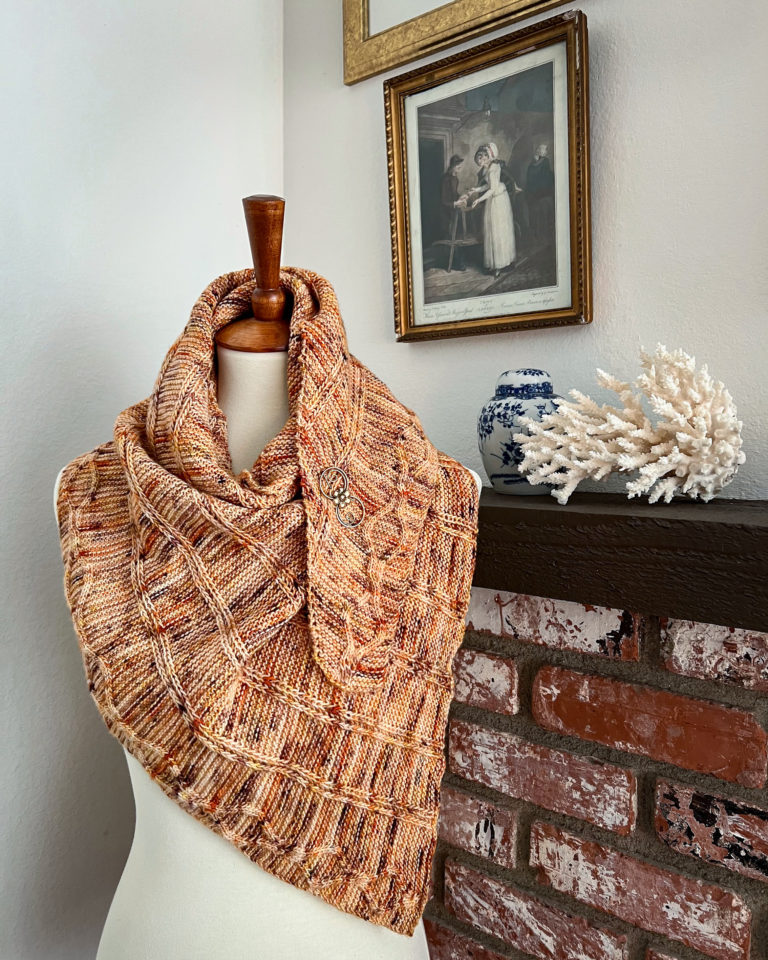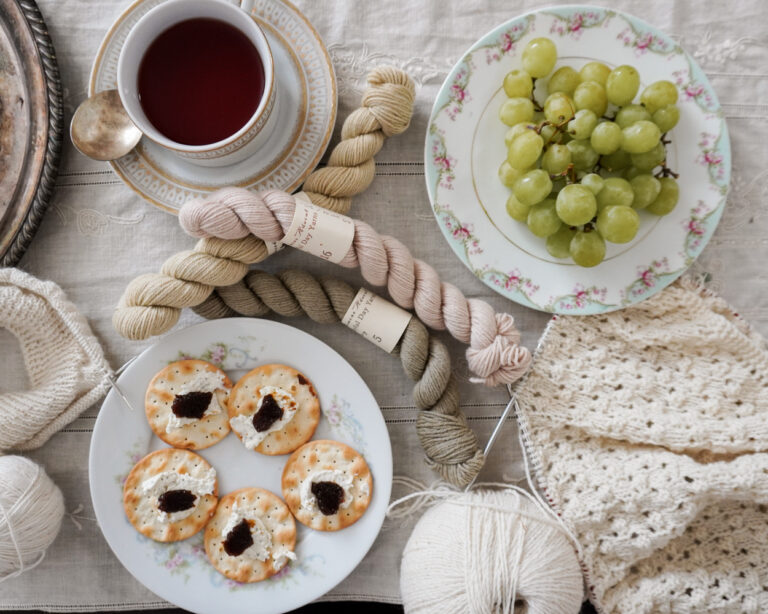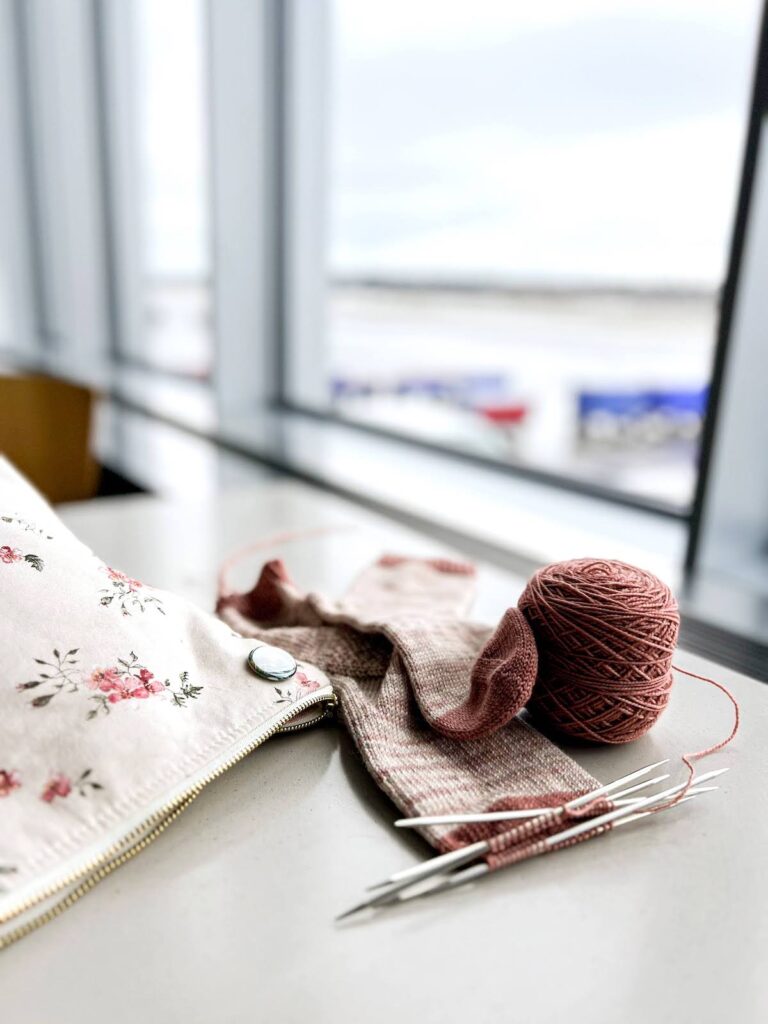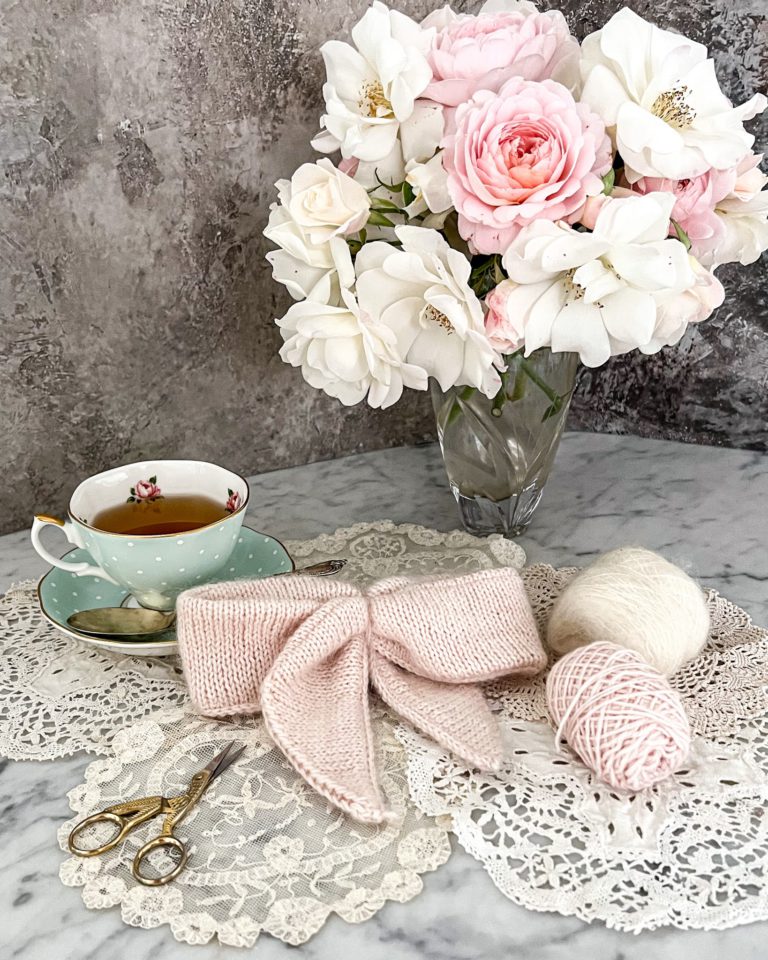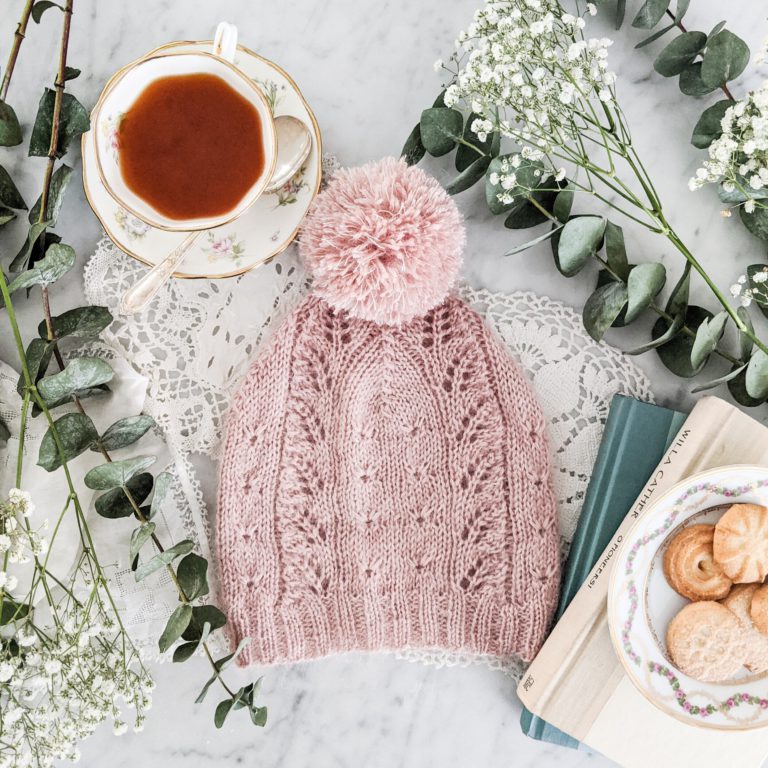Many knitters got into making their own clothes out of concern for the environment and the effects of fast fashion. That’s definitely part of my motivation for knitting and designing. I like slow fashion, the feel of natural yarns, and being able to choose the sustainable option where I can.
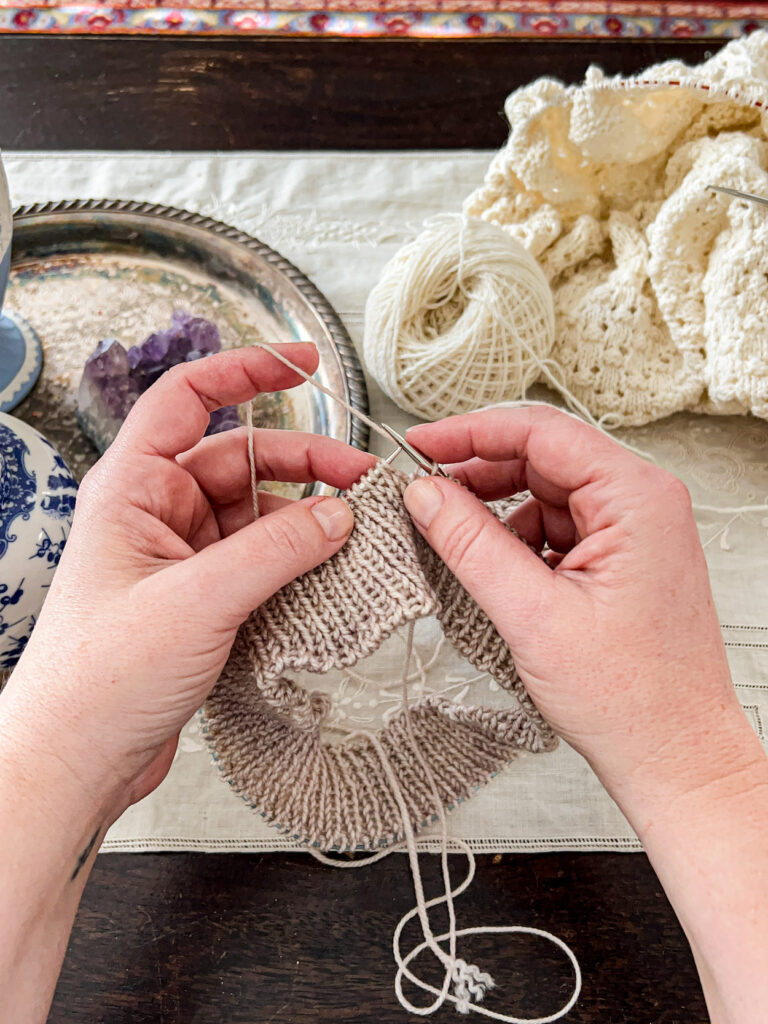
And yet, it can sometimes feel like the knitting community places just as much pressure on us to consume, but to consume in different ways. Nearly every pattern features a specific yarn, and there are dyers with limited edition colorways, and sometimes you want to knit a project for a special event (like a fiber festival where you and your friends are wearing matching hats or sweaters) that requires a certain kind of fiber.
There is, however, a way to avoid having to always buy new yarn for every project. It’s called yarn substitution.
What is Yarn Substitution?
Yarn substitution is, to put it simply, swapping in a different yarn instead of using the yarn recommended in a pattern. The yarn that’s featured in the sample for the pattern isn’t the yarn you are required to use. Making a substitution can take a few different forms and requires a bit of foundational knowledge, so if you’re not comfortable making substitutions yet, be sure to check out my guide to yarn substitution for newer knitters.
Some yarn substitutions are more successful than others. For the greatest likelihood of success, you should try to match fiber content, yarn thickness, and yarn construction between the original yarn in the pattern and the substitution yarn you plan to use. Yarnsub.com can be a great resource when you’re getting started, too.
Why Yarn Substitution is Key for Sustainability
Yarn substitution can sound like a lot of work. In reality, it’s not that bad, and it has some serious benefits when it comes to sustainability. Here are three ways that yarn substitution can make your knitting practice better for the environment and for your wallet.
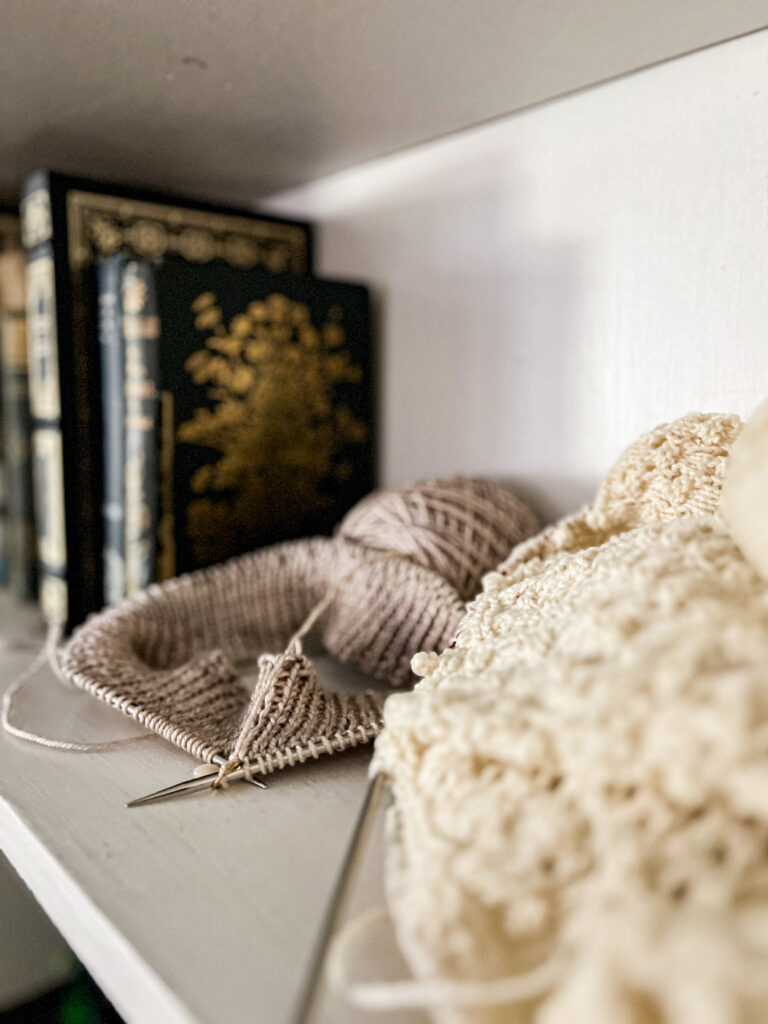
Yarn substitution enables you to use up leftovers
Many of us knitters end up with some leftover yarn at the end of our various projects. If you know the weight, fiber content, and construction of the leftover yarn and the yarn recommended in a pattern, you can use those leftovers to make smaller projects or scrappy projects that use up your leftover bits and bobs.
I’m a big fan of striped hats and socks to use up leftovers from my other projects, along with the Mitered Square Blanket of Doom (I really do need to do an update on that one, don’t I?). If you’re comfortable with stranded colorwork, that can also be a great way to use many different colors in one project.
If you’re like me, you might even have scrappy leftovers in several colorways on the same base from the same dyer. These leftovers are great because you can seamlessly combine them into another project originally designed for one colorway. You can knit the brim of a hat in one color, for example, and the rest of the hat in another. You can add stripes to a plain stockinette sweater, or you can make a multicolored shawl. The options are limitless and so much more fun than a pile of fast fashion items.
And of course, if you’re using up leftovers, that means you are reducing the size of your yarn footprint, avoiding throwing out perfectly usable fiber, and eliminating the need to buy more yarn that has to travel long distances powered by fossil fuels. Win win win.
Yarn substitution empowers you to use fibers from more sustainable sources
If you find a pattern you like but the yarn featured in that pattern uses materials or sources that you prefer to avoid, you can do that with yarn substitution.
For example, if you really care about sustainable farming and try to avoid synthetic fabrics, but you’ve fallen in love with a pattern that uses synthetic yarns, understanding yarn substitution can help you make a swap and use responsible wool standard-certified yarn or organic cotton yarn (if you prefer plant-based fibers) instead. Switching to more sustainable yarns for your knitting projects can help you achieve your environmental goals without sacrificing fit or drape.
This is one of my favorite effects of yarn substitution, and it’s a big part of the reason I love being able to knit my own garments. The fashion industry is, unfortunately, in a race to the bottom by maximizing profits through using cheaper materials. Even relatively high-end brands nowadays often have a surprisingly high percentage of synthetic materials in their sweaters, but I don’t like how large amounts of nylon, acrylic, polyamide, etc. feel against my skin. Being able to knit my own tops with minimal or no synthetic fibers in them is a way to get high quality items while frequently also supporting small businesses.
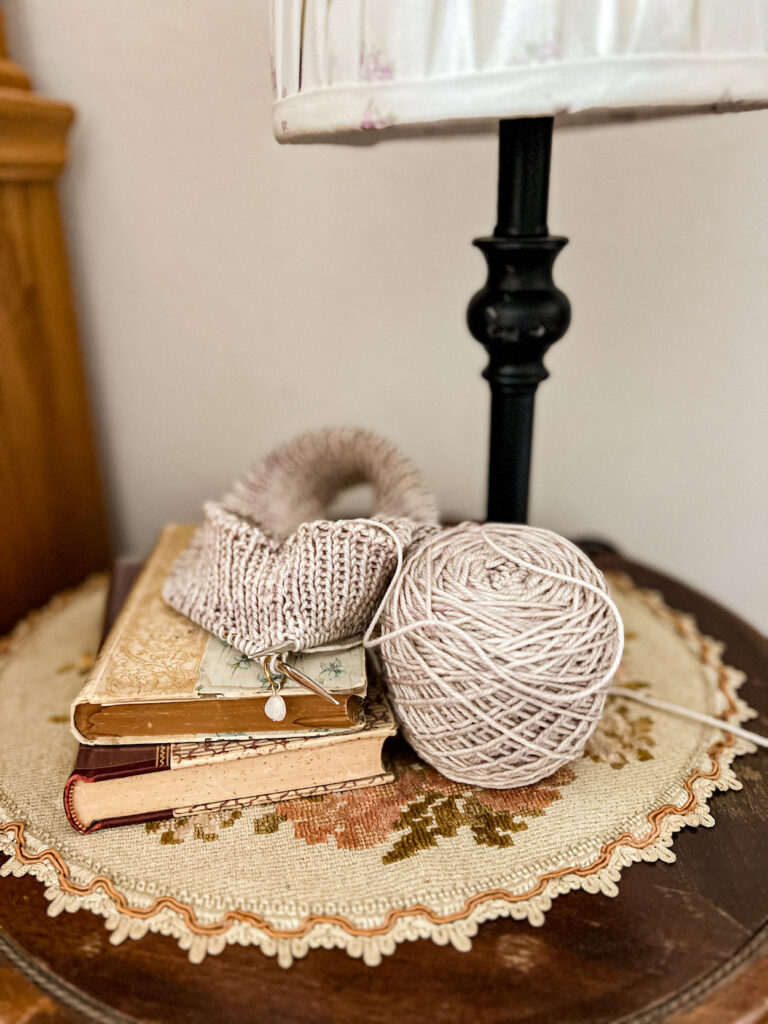
Yarn substitution helps you to recycle yarn
If you’ve knit something but no longer wear it or have found a lovely sweater at the thrift shop and want to use the yarn for something else, you can do so with yarn substitution. It’ll be rare to find a pattern written specifically for an unraveled and recycled sweater, but if you understand how to swap one yarn for another, you’ll be able to make those adjustments on your own with very little effort. With this skill set, you can turn old sweaters into new ones (or other accessories) with very little stress.
This has a double bonus because it allows you to use items sourced from local communities that would otherwise end up as textile waste. The textile industry generates so many millions of pounds of waste each year (and yarn manufacturers aren’t immune to this), but pulling apart and reusing materials from existing items is a sustainable practice that can be a great way to reduce your carbon footprint. The yarn only needs to be produced once, but you give it new life in another project.
Yarn Substitution is Only One Factor in Knitting Sustainably
As with so many other things, knitting sustainably is a complex equation of balancing consumption, materials, sourcing, labor, and more. Each of us will need to strike different balances based on our goals and available resources. Whether your focus is on using organic yarns, making sure you are sourcing your yarns from fair trade enterprises, or closing the loop in a circular economy by reusing existing materials, each little bit helps make a more sustainable yarn supply chain.
And of course, the best way to practice sustainable knitting is to knit things you or somebody else will actually use. Many of us knitters knit for mental health or as a stim, so we knit constantly, and that can be in tension with our goals to lessen our environmental impact. When in doubt, ask yourself: do I need this? Do I want this? Will I use this? If not, does somebody else I know truly need and want this, and will they actually use it? If the answer to those questions is no, try to knit something else that does fit those needs and desires.
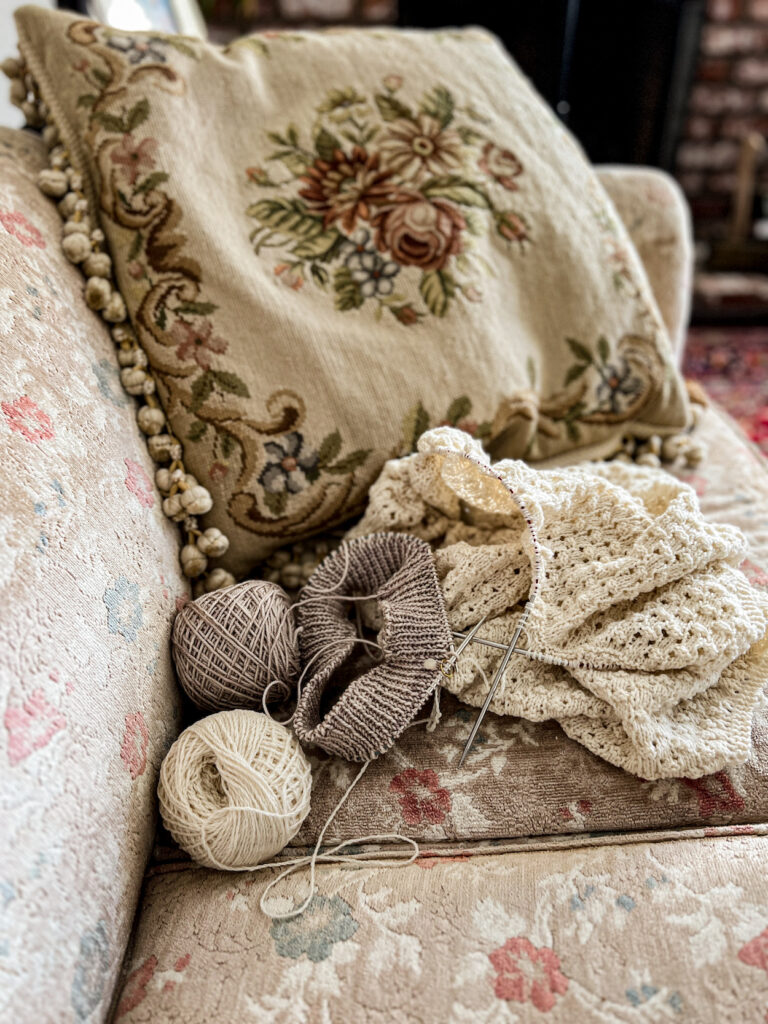
For more on sustainable knitting, check out the following resources:
fibershed.org, which focuses on building regional fiber production networks that focus on healthy ranching practices, animal welfare, and soil maintenance
woolandpalette.com, where you can source yarn made with natural fibers and dyed using natural dyeing techniques (Emily Lymm, the owner and dyer, is also a dear friend whose work is phenomenal)
slow-knitting.com, which is full of information about sheep, wool, dyes, and other things involved in the production of sustainable yarn

